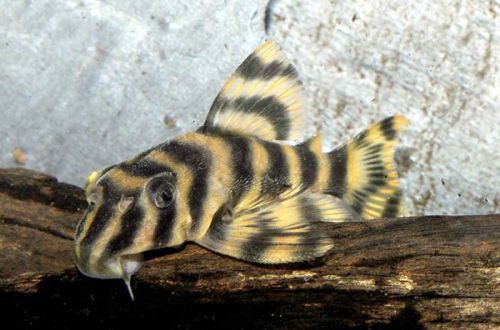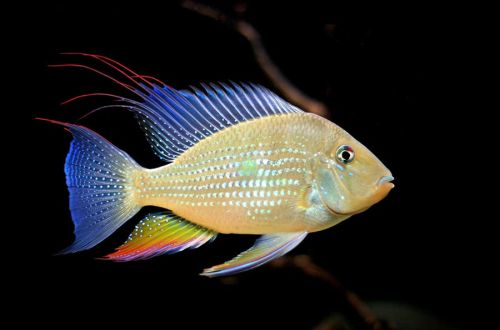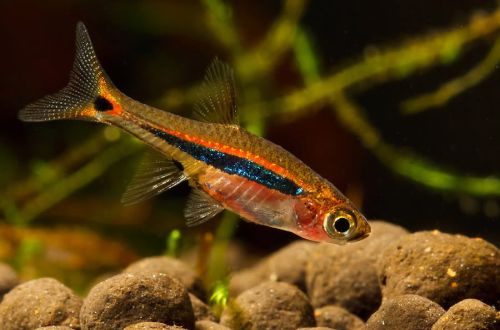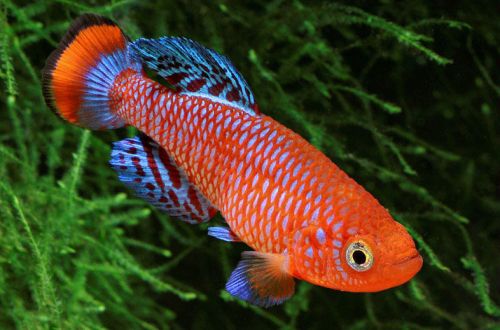
Pecoltia striped
Pecoltia vittata or Pecoltia striped, scientific name Peckoltia vittata, belongs to the family Loricariidae (Mail catfish). Catfish lives in South America, inhabiting the vast Amazon River basin in Brazil, Venezuela, Colombia.

Description
Adults average up to 8–9 cm, but in some cases can grow up to 15 cm. Given the wide distribution area, such large sizes probably belong to certain geographical subspecies.
Catfish has a somewhat flattened body with a pointed triangular head (when viewed from above). The body is covered with hard bony plates. The fins are large and fan-shaped. The first rays are thickened and are spikes.
The body pattern consists of rows of dark lines on a lighter background of yellow, orange or gray.
Behavior and Compatibility
Pecoltia striped is relatively peaceful. However, with a lack of space, skirmishes over the territory between representatives of the species and with other bottom fish may occur. As a rough guide, the following ratio should be used – one catfish per 100 cm² of bottom area.
As neighbors in a small aquarium, it is worth acquiring species that live in the water column or near the surface. At the same time, the catfish will not consider snails and shrimps as a threat to its territory and they will be safe. In spacious tanks, it gets along with many non-aggressive fish. Thanks to its reliable armor, it successfully resists not the most friendly species, for example, some representatives of South American cichlids.
Brief information:
- The volume of the aquarium – from 80 liters.
- Temperature – 23-26°C
- Value pH — 5.0–7.5
- Water hardness – 2–20 dGH
- Substrate type – any
- Lighting – subdued
- Brackish water – no
- Water movement – light or moderate
- The size of the fish is up to 15 cm.
- Food – any sinking food
- Temperament – conditionally peaceful
- Content alone or in a group
Maintenance and care, arrangement of the aquarium
The optimal volume of the aquarium for one catfish and several compatible species of comparable size starts from 80-100 liters. The design must provide places for shelters in the form of snags and other decoration elements in which Pekoltia vittata will hide in the daytime. The rest of the design is selected at the discretion of the aquarist and / or based on the needs of other fish.
For long-term maintenance, it is important to provide clean water within the acceptable range of pH and dGH values. To this end, it is necessary to regularly maintain the aquarium and regularly replace part of the water with fresh water.
Food
In nature, they feed on plants, wood fibers (snags), algae, and small invertebrates. In the home aquarium, popular sinking foods will be accepted in the form of flakes, tablets, granules containing plant components in their composition.





